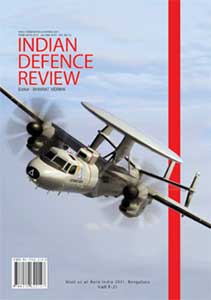Meanwhile, the pressure groups would remain oblivious of the harm their seemingly innocuous demands would cause to the institution of armed forces that they have maintained of necessity at heavy cost. Militaries in matured democracies the world over observe this principle and forcefully articulate their concerns, giving in to the final authority of government only at the end. It is therefore important that rather than just murmuring weak and disjointed suggestions and leaving the matter at that, Indian military leaders articulate their bonafide concerns with due force of conviction to the policy makers, who, even if unable to understand well the sensitivities of the military institution, are mostly appreciative of their armed forces’ needs. Had this step been taken without succumbing to the lure of ranks and pay, it is certain that a better solution than mass upgrade of ranks and acceptance of higher aged soldiery would have emerged in due course – and the Indian Army would have been better off in performing to its mandate.
The Concept of National Security
The celebrated political philosopher Samuel Huntington argues that there are three forms of national security policy. First comes the ‘military security policy’ that aims at neutralisation of armed threat from external adversaries, second comes the ‘internal security policy’ to thwart home-grown inimical forces, and the third is the ‘situational security policy’ to protect the state from social, demographic, economic and political threats.
 As in two out of the three security concerns the Army remains a major factor, there is no escape from military preparedness, notwithstanding the pious but misplaced notions entertained by many schools. Wishful dreams of emergence of economic globalization, ‘soft power’ and democracy, that would supposedly repudiate security concerns may be enticing, but similar dreams have been articulated throughout the history and proved to be illusionary every time.
As in two out of the three security concerns the Army remains a major factor, there is no escape from military preparedness, notwithstanding the pious but misplaced notions entertained by many schools. Wishful dreams of emergence of economic globalization, ‘soft power’ and democracy, that would supposedly repudiate security concerns may be enticing, but similar dreams have been articulated throughout the history and proved to be illusionary every time.
One of the visible examples is the simplistic idea that terrorism is a direct result of social ills and poverty, and can therefore be comprehensively addressed by socio-economic uplift alone, if that was so, then Ireland, Kosovo, Nagaland, Kashmir and Punjab would not have happened. The fact of human compulsions is that when increasing aspirations cannot be sustained within the opportunities at hand, there is strong urge to look beyond and lay claim upon other’s way of life. That is why the Nagas want to control what they perceive as “Greater Nagaland”, Salafists wish to dictate to the “Ummah”, Maoists want to change the political order and the Chinese eye Arunachal Pradesh.
In fact, ‘softness’ of state encourages inimical forces – even non-state actors and misguided citizens – to flex their muscles. They will be dissuaded from crossing the Rubicon and find more civilized solutions to their needs only by a threat of retaliatory force. Indeed, while old causes of war remain valid, new agenda of conflicts have emerged – energy, ecology, environment, health, water, ethnicity, and so on.
“¦ while build up of military arsenal and industry takes decades to fructify, development of military ethos needs generations to foster.
No doubt there is inter-state and intra-state warfare in our future – for the sake of maintaining peace. That is why, no country has chosen to civilianise its military establishment, nor have they shied away from keeping their ‘powder’ dry.
Imperatives of Military Preparedness
History is testimony to the fact that societal culture and articulation of its political goals are best promoted with the backing of military power, military preparedness being the most potent argument for the over-assertive adversaries to desist. The problem, however, is that military power takes long years to forge simply because warfare is much more than just a clash of physical force and techniques of weapon usage. War is an extraordinary recourse and its outcome is unbound by the laws of science, scales of funds and resources committed; physical force applied, technical skills, extreme courage and high intellect displayed by the soldiery and the supreme will of the state to engage in the extreme struggle at any cost, all playing crucial part in its successful prosecution. It is a mind game of strategic and tactical acumen that requires decades of painstaking development of such ethos and culture which are well above the normal course of life.
The other basic constituent of military preparedness, that is, its material dimension – in other words, quality and range of weapons and equipment of war – means little in securing victory if it is not tempered with the soldier’s code of conduct. Thus while build up of military arsenal and industry takes decades to fructify, development of military ethos needs generations to foster.
Rather than finding better emoluments within the same rank structure and a second career at the middle age, the Army is now required to win wars with bloated staff and personnel-deficient units”¦
Conversely, wars tend to appear in the horizon in a matter of few months. This leaves no choice to the nations but to remain prepared lest the time of reckoning goes unattended, leaving behind disconcerting ramifications of military debacle in near-perpetuity. Policy makers in India, therefore, would be wise to appreciate what Colin Gray states.., “A culture that anticipates no serious threat to its security is unlikely to organise the kind of armed forces that would be needed in more testing times”, and so repudiate attempts to fiddle with the institution of the armed forces in favour of short term expediency.




